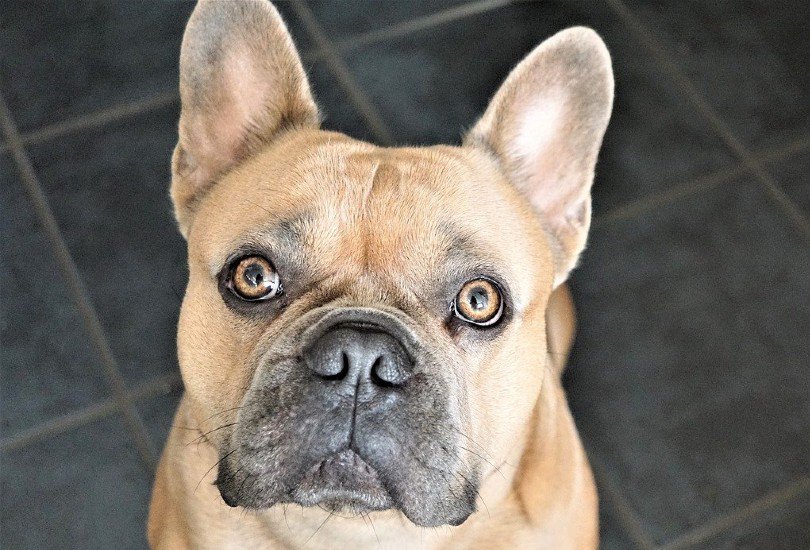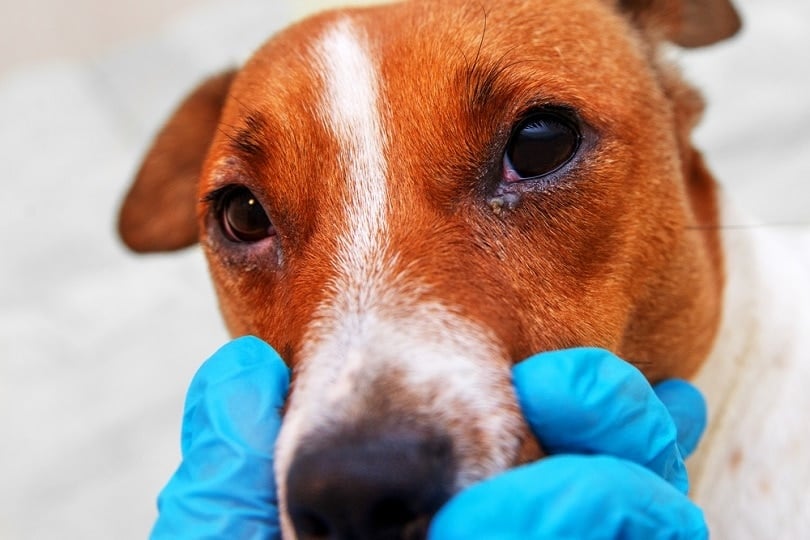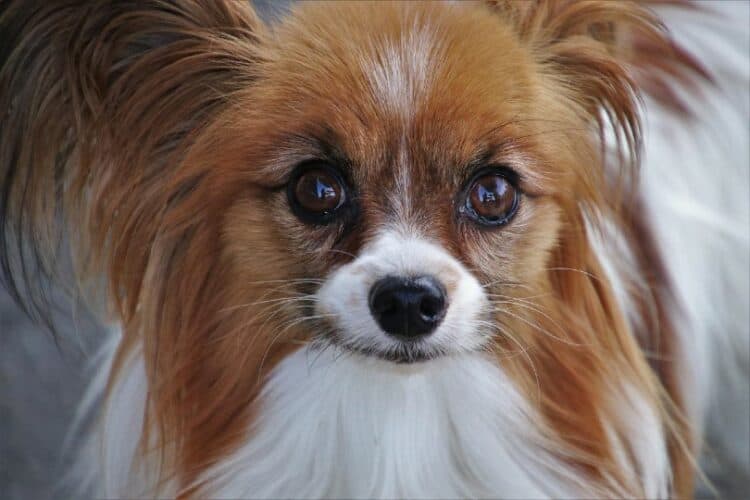If eyes are the windows to the soul, then eyelids must be the shutters. Our vision enables us to see the world around us, and our eyelids help protect our eyes. The same goes for dogs’ eyes, so consequently, eyelids are an essential part of your dog’s health.
But have you ever wondered how many eyelids dogs have? Dogs actually have three eyelids, compared to our two.
Here, we tell you more about that third eyelid and what kind of health conditions you should look out for that can affect your dog’s eyelids.
The Third Eyelid
The third eyelid is also called the nictitating membrane, and many vertebrates have it, including birds, reptiles, dogs, and cats.
Beyond the upper and lower eyelids that enable dogs to blink, the third eyelid is a small, triangular-shaped membrane found on the inside corner of the eye. It’s typically translucent, slightly yellow, or cloudy, but this depends on the breed.
When it closes, it draws horizontally across the eye from the inner corner to the upper, outer corner of the dog’s eye.
What Is the Third Eyelid For?
Just like the main eyelids, the third eyelid helps protect the eye from debris and from injury. This comes in handy when the dog is hunting prey and the weather is bad or they have to traverse through particularly dense brush.
It also keeps the eyes lubricated because it helps spread tears whenever the dog blinks. The third eyelid is responsible for producing some of the tears due to a tear gland at the eyelid’s base. These tear glands also produce antibodies that the membrane helps distribute across the eye.

Health Problems With the Third Eyelid
The third eyelid isn’t typically visible unless the dog suddenly opens their eyes. But it can become visible when there’s a health issue. Common eye problems that involve the eyelids include cherry eye, pink eye, blepharitis, entropion, and ectropion.
Cherry Eye
Cherry eye is a relatively common eye problem in dogs. The third eyelid gland becomes prolapsed, which means it has moved out of its usual position. It looks like a red mass in the bottom corner of the dog’s eye, which is where the term “cherry eye” comes from.
Treatment is usually through surgery and with medication after the surgery. If left untreated, it could cause secondary eye problems.
Pink Eye
Conjunctivitis is also called pink eye. The nictitating membrane is made up of conjunctiva, and it also covers the eyelids and eyeball itself. The conjunctiva is usually a nice normal pink, but it swells and turns even pinker or red when it’s inflamed.
Treatment depends on the cause, which can be bacterial, viral, or allergic. So, it might be through antibiotics, antiviral medication, or steroids via eye drops and/or oral medication.
Blepharitis
Blepharitis causes inflammation on the eyelid or just along the edges. It’s not an emergency situation, but your dog will experience a certain amount of discomfort.
It can be caused by several issues, including bacterial, allergic, autoimmune, parasitic, and fungal, which means treatment will depend on the specific cause. Medication is usually successful, but if it’s an autoimmune problem, the treatment will be lifelong.

Entropion
Entropion is an uncomfortable condition for dogs because the eyelid turns inward and the eyelashes start rubbing against the eye. It can affect the bottom or top or both eyelids.
Unfortunately, this is a case that requires surgery. The extra skin on the eyelid is removed, and the eyelids are tightened.
Ectropion
Ectropion is when the eyelid starts to pull away from the eye. You may have seen this in Bloodhounds. When the eyelid is not resting on the eye, it can cause irritation and potential pink eye.
Surgery is necessary here. The eyelids are shortened and tightened to rest closer to the eye.
Conclusion
The third eyelid does a great job of protecting your dog’s eyes, and for the most part, you shouldn’t see that eyelid unless your dog has half-closed eyes or has been startled awake. If their third eyelids are more noticeable than normal, speak to your vet as soon as possible. Look for any other eye issues, such as discharge or cloudiness. If there’s inflammation, redness, squinting, or rubbing at the eyes, you should make an appointment for your dog to see the veterinarian.
Featured Image Credit: Pixabay














